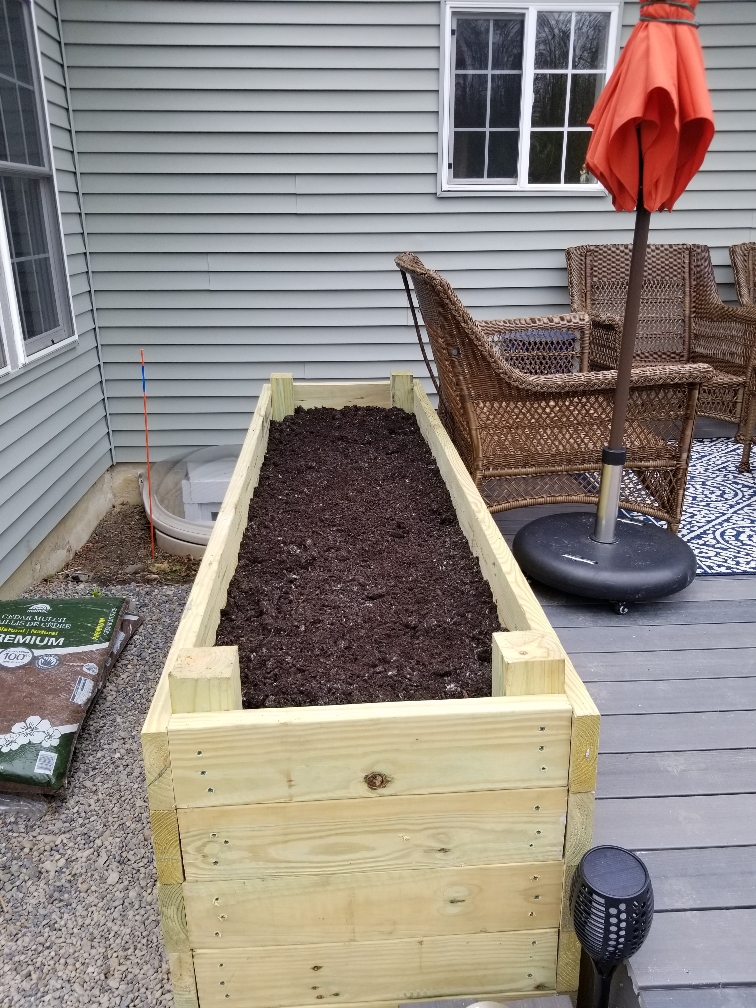All grafted root stocks are now in the ground. Many took bad hits from some of last weeks freezes; will give them a few days to see if some of the froze ones come back to life. Many of them have a bud wrapped in under the grafting tape and maybe some of them survived, we'll see. Am interested in knowing how everyone made out with their seedlings thru all of the frosts and freezes.
Checked on the apple seeds planted directly into the ground last winter; they weren't doing well. I think the temps in the twenties was killing them as they germinated. Just in case they were being eaten by geese or rabbits, I fenced them and a few more came up and survived last weeks weather but direct in the ground winter planting was basically a bust here this year.
![IMG_0369[4439].jpg IMG_0369[4439].jpg](https://habitat-talk-data.xenforo.cloud/attachments/29/29750-d59cfee2522efa28dbc39c734c54ba9a.jpg?hash=1Zz-4lIu-i)
Planning to test it again next fall/winter.
On a positive note the seeds planted in jugs are doing great. Opened up three jugs yesterday to see how they are handling all of these crazy temperature swings and they were all doing fine.
![IMG_0375[4437] (2).jpg IMG_0375[4437] (2).jpg](https://habitat-talk-data.xenforo.cloud/attachments/29/29751-ef74cccf429494538575ce717fa87f4d.jpg?hash=73TMz0KUlF)
Notice that the seedlings in the jug to the left have grown less than the seedlings in the right hand jug. The seedlings to the left and the jug next to it are in less quality jugs and and the cut seam in the jugs was taped with a cheaper duct tape and had come loose in spots letting air in and more moisture out. The better growing seedlings were in a Poland Springs jug which is of higher quality than the others used. The better growing seedlings jug was also sealed with a better duct tape, a heavy black Gorilla tape. The Gorilla tape was strongly attached to the jug with zero leak spots. All jugs were outside thru winter and spring sitting against each other along with fifty or so other jugs. Two different soils were used and maybe jug one had one kind and another had another kind. And I had not marked which had which as testing different soils was not in the picture at the time. The two different soils used were Miracle Grow seed starting mix and Jiffy seed starting mix. There were no weeds in any of the jugs.
Here is a closeup of the left hand jug;
![IMG_0374[4434].jpg IMG_0374[4434].jpg](https://habitat-talk-data.xenforo.cloud/attachments/29/29752-e61b1a26f3560b221a7bfadbdbec8e1b.jpg?hash=5hsaJvNWCy)
And here is a closeup of the better growing jug from the pic of the three jugs;
![IMG_0372[4435].jpg IMG_0372[4435].jpg](https://habitat-talk-data.xenforo.cloud/attachments/29/29753-c23ddc9df2abbbb69fd52043cc3f1c40.jpg?hash=wj3cnfKru7)
Notice that there is more moisture in the better growing jug and that one leaf is actually covered in ice! And once melted that leaf looks just fine. The jugs will now be resealed and put back outside in among the other jugs. Thus winter jug planting of apple seeds and immediately after planting seeds placing the planted jugs outside in January or February worked fine here during this its first year of testing here. While all jugs performed satisfactorily some jugs performed better than others but we don't know why yet. Transplanting of the jug seedlings to a garden bed will begin as time permits likely in two weeks if no additional freeze warnings surface.


![IMG_0369[4439].jpg IMG_0369[4439].jpg](https://habitat-talk-data.xenforo.cloud/attachments/29/29750-d59cfee2522efa28dbc39c734c54ba9a.jpg?hash=1Zz-4lIu-i)
![IMG_0375[4437] (2).jpg IMG_0375[4437] (2).jpg](https://habitat-talk-data.xenforo.cloud/attachments/29/29751-ef74cccf429494538575ce717fa87f4d.jpg?hash=73TMz0KUlF)
![IMG_0374[4434].jpg IMG_0374[4434].jpg](https://habitat-talk-data.xenforo.cloud/attachments/29/29752-e61b1a26f3560b221a7bfadbdbec8e1b.jpg?hash=5hsaJvNWCy)
![IMG_0372[4435].jpg IMG_0372[4435].jpg](https://habitat-talk-data.xenforo.cloud/attachments/29/29753-c23ddc9df2abbbb69fd52043cc3f1c40.jpg?hash=wj3cnfKru7)


